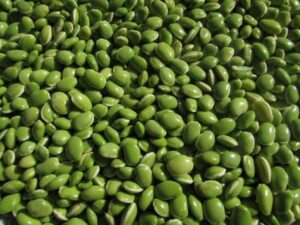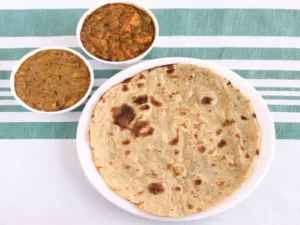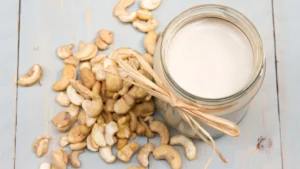Korean cuisine is a vibrant tapestry of flavors, colors, and textures. Whether it’s the spicy kick of kimchi or the savory richness of bulgogi, there’s something undeniably captivating about this culinary tradition. But as health-conscious eaters seek to enjoy these delightful dishes without compromising their wellness goals, navigating healthy Korean food can sometimes be tricky.
The good news? With just a few mindful adjustments in your cooking techniques and ingredient choices, you can savor all the beloved tastes while keeping it nutritious. Let’s explore some common pitfalls that many encounter when preparing Korean meals at home and how to sidestep them for a healthier dining experience!
Importance of Healthy Cooking Methods
Healthy cooking methods are crucial when it comes to preserving the nutritional value of foods. They help retain vitamins, minerals, and essential nutrients that can be lost during high-heat or prolonged cooking processes.
Techniques like steaming, grilling, and stir-frying with minimal oil allow you to enjoy vibrant vegetables packed with flavor. These methods not only enhance the taste but also keep your meals light and wholesome.
Furthermore, using healthier techniques reduces added fats and sugars in dishes. This is particularly important for Korean cuisine, which often relies on rich sauces and frying methods.
By choosing proper cooking styles, you can craft delicious meals without compromising health benefits. Embracing these practices encourages a balanced approach to eating while still enjoying the authentic flavors of Korean food. Every meal becomes an opportunity to nourish your body while delighting your palate.
Common Mistakes when Cooking Korean Food:
Cooking Korean food can be a delightful experience, but common mistakes can hinder the healthiness of your dishes.
One major error is overcooking vegetables. This not only diminishes their nutritional value but also affects texture and flavor. Fresh, crisp veggies are essential for authentic taste.
Using excessive amounts of oil is another pitfall. While some recipes call for it, too much oil can turn a healthy meal into a calorie bomb.
Another mistake is neglecting protein sources. Traditional Korean meals often feature meat or tofu as key ingredients for balance and sustenance.
Adding too much sugar or salt masks natural flavors and leads to unhealthy dishes that stray from authentic tastes.
Choosing unhealthy side dishes can derail your efforts to maintain a balanced diet. Opting for refined carbs instead of whole grains diminishes the overall benefits of your meal.
– Overcooking Vegetables
One of the most common mistakes in making healthy Korean food is overcooking vegetables. Many recipes call for quick stir-frying or blanching, but it’s easy to lose track of time.
When you cook vegetables too long, they lose their vibrant colors and essential nutrients. Instead of enjoying a crunchy texture, you’ll end up with mushy greens that lack flavor and appeal.
Korean cuisine celebrates fresh ingredients. Think about dishes like bibimbap, where crisp veggies add a delightful contrast to warm rice. Maintaining that crunch not only enhances taste but also preserves important vitamins.
A simple trick? Keep an eye on your cooking times and test as you go. Your palate will thank you when those colorful veggies shine on your plate!
– Using Excessive Amounts of Oil
Oil plays a crucial role in many Korean dishes, but moderation is key. Using excessive amounts of oil can transform a healthy meal into an unhealthy one.
Many traditional recipes may call for generous amounts of oil for flavor and texture, but too much can lead to unwanted calories and fats. Instead of drowning your vegetables or proteins in oil, consider using just enough to enhance the dish without overpowering it.
There are healthier cooking techniques you can adopt as well. Try sautéing with water or broth instead of oil to retain flavors while cutting down on fat content. Alternatively, opt for oils that are lower in saturated fats, like olive or sesame oil.
Balancing taste with health is vital when preparing Korean food at home. Being mindful about how much oil you use allows the freshness of ingredients to shine through without compromising nutritional value.
– Not Incorporating Protein Sources
When preparing healthy Korean food, protein often takes a backseat. This can lead to meals that lack balance and essential nutrients.
Korean dishes are rich in flavors and textures, but overlooking protein can leave you feeling unsatisfied. Many traditional recipes feature tofu, fish, or lean meats as integral components. Neglecting these ingredients diminishes the dish’s nutritional value.
Incorporating diverse protein sources enhances your meals while keeping them true to their roots. Consider adding grilled chicken or seafood to bibimbap for an extra boost of energy.
Vegetarians can benefit from using tempeh or seitan alongside classic vegetables like spinach and mushrooms. These options not only provide nourishment but also add depth to your cooking adventures.
Don’t miss out on the chance to create hearty dishes by ignoring proteins; they play a crucial role in maintaining a balanced diet while enjoying delicious Korean cuisine.
– Adding Too Much Sugar or Salt
Korean cuisine is celebrated for its bold flavors, but it’s easy to go overboard with sugar and salt. Many people think that a little extra enhances the dish, but this can mask the natural tastes of fresh ingredients.
Korean dishes often include fermented elements like gochujang or doenjang, which already contribute significant flavor. Adding more sugar or salt can lead to an unbalanced meal that’s not as nutritious.
Excessive sugar intake can spike your energy levels momentarily but leads to crashes later on. It also poses long-term health risks if consumed regularly.
Salt, while essential in moderation, can increase blood pressure and affect kidney function when used excessively. Aim for balance instead of overpowering seasonings; let the authentic flavors shine through by using them sparingly.
Experiment with herbs and spices—these add depth without compromising health benefits.
– Choosing Unhealthy Side Dishes
Side dishes, or banchan, are a vital part of Korean dining. They enhance the meal and bring variety to the table. However, selecting unhealthy options can undermine your efforts in preparing healthy Korean food.
It’s tempting to reach for fried items like sweet potato tempura or heavily seasoned pickles loaded with sodium. These choices may taste delicious but pack unnecessary calories and unhealthy fats.
Instead, consider lighter alternatives such as steamed vegetables or lightly marinated salads made from fresh ingredients. Fermented items like kimchi offer probiotics while still being nutritious.
Pay attention to portion sizes too; even healthier side dishes can contribute excess calories if overindulged. Balance is key when creating a harmonious plate that supports your health goals without sacrificing flavor.
How to Avoid These Mistakes and Cook Healthier Korean Food:
To cook healthier Korean food, start with your vegetables. Instead of boiling them to mush, try steaming or stir-frying quickly over high heat. This helps retain their vibrant colors and essential nutrients.
When it comes to oil, switch to healthier alternatives like sesame oil or avocado oil in moderation. These oils can enhance flavor while avoiding excessive calories.
Selecting lean protein sources is crucial too. Opt for chicken breast, tofu, or legumes instead of fatty cuts of meat. They provide the necessary protein without unwanted fats.
Experimenting with natural sweeteners like honey or stevia can help reduce sugar intake in sauces and marinades.
Choose side dishes wisely; consider options like a fresh cucumber salad or steamed broccoli instead of fried items. These adjustments will elevate your meals towards that healthy Korean experience you crave!
– Techniques for Cooking Vegetables Properly
To cook vegetables properly, start with the right techniques. Steaming is a fantastic method that preserves nutrients while keeping veggies crisp and vibrant. Just a few minutes over boiling water can make all the difference.
Stir-frying is another great option, especially in Korean cuisine. Use high heat and toss your vegetables quickly to maintain their texture and flavor. This method works best when you cut them into uniform pieces for even cooking.
If you’re looking for something different, try blanching before adding them to your dishes. Quickly plunging veggies into boiling water followed by an ice bath locks in color and crunch.
Don’t forget about marinating! A simple mix of soy sauce, garlic, or ginger adds depth without overpowering the natural flavors of fresh produce. Explore these techniques to elevate your healthy Korean food experience!
– Healthier Alternatives to Oil
When it comes to cooking healthy Korean food, reducing oil is key. Fortunately, there are several healthier alternatives that can enhance flavor without the extra calories.
Consider using vegetable broth for stir-frying or sautéing vegetables. It adds moisture and depth without adding fat. You can also try water-based methods like steaming or poaching to retain nutrients while keeping dishes light.
Another great option is incorporating fermented ingredients such as kimchi juice or doenjang (fermented soybean paste). These add a unique taste and vibrant flavors with minimal oil.
For a touch of richness, avocado puree or nut butters can be used sparingly in dressings and marinades. They bring creaminess while being packed with beneficial fats.
Experimenting with these alternatives not only makes your meals healthier but also introduces new tastes into traditional recipes.
– Choosing Lean Protein Sources
Choosing lean protein sources can significantly enhance the healthiness of your Korean dishes. Traditional options like beef and pork are often higher in fat, but you can easily swap them for healthier alternatives. Consider using chicken breast or fish, which provide excellent protein without the extra saturated fats.
To maintain that authentic flavor we all love about Korean cuisine, opt for marinated grilled chicken or baked fish seasoned with traditional spices like gochugaru (Korean red pepper flakes) and sesame oil. Tofu is another fantastic option; it absorbs flavors beautifully while being a great plant-based protein source.
Don’t forget to incorporate legumes as well! They add both heartiness and nutrition to meals while keeping them light. By making these small adjustments, you will enjoy healthy Korean food that delights your taste buds without compromising on health benefits.
With mindful choices in cooking methods and ingredients, preparing deliciously healthy versions of classic Korean dishes becomes effortless. Happy cooking!




